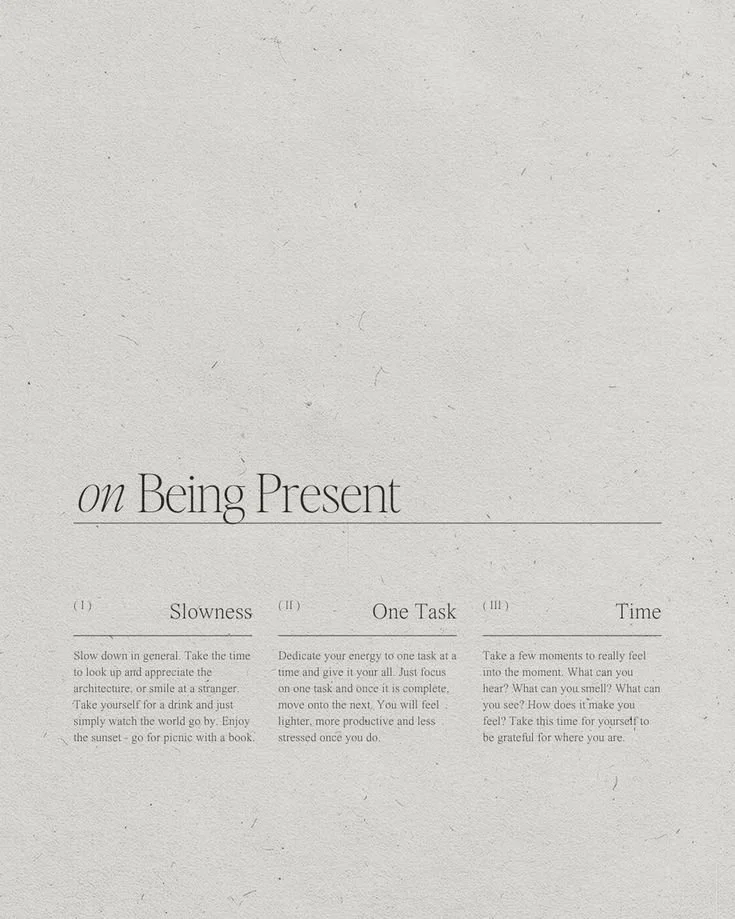Ever feel like your life is a hot mess express, chugging full steam ahead to Chaosville? We’ve all been there, sister. Maybe it’s after a major life upheaval, or maybe it’s just the Wednesday blues, but either way, getting your groove back doesn’t need to be as daunting as organizing that infamous junk drawer (you know the one).
Taking it one day at a time, slowing down, and being mindful of the present moment can significantly aid in reclaiming a hold on life. In a world that constantly demands our attention and pushes us to rush through each day, practicing mindfulness and focusing on the now allows us to reconnect with ourselves and our surroundings.
In this article, we share your no-BS guide to pulling it all back together when things seem to be falling apart.
No. 1
Chart Your Course
Before you do anything else, try to figure out where you want to go.
No, you don’t need a detailed, color-coded road map of your entire life, but having a general idea of your direction helps a ton. Set some goals, big or small. Whether it’s improving your health, advancing your career, or just making more time for your passions, knowing your destination is the first step to getting there.
No. 2
Declutter Like a Boss
Clutter isn’t just about having too many shoes (although, let’s be honest, is there really such a thing?).
It’s also about shedding the old habits and toxic relationships that are bogging you down. Take a good, hard look at your life and start tossing anything that doesn’t bring you joy or move you forward. Yes, this might mean breaking up with your sofa (and its permanent you-shaped imprint) to get more active.
No. 3
Embrace the Routine
Let’s jazz up the word ‘routine’—think of it as your personal rhythm, the daily dance of your life.
Creating a structured routine can free up a surprising amount of mental space and energy. Set up your day with purposeful activities, and watch as productivity starts to spike. And remember, substituting Alcami Elements for coffee is a perfectly acceptable cornerstone of this new routine.
No. 4
Hit the Refresh Button
Sometimes, starting fresh means getting a new perspective.
This could be as simple as rearranging your furniture to break the monotony or as involved as taking up a new hobby that challenges you. Shake up your norms and see how a little change can make a big impact.
No. 5
Check-in With a Pro
If the going gets tough, remember that mental health help, offered by the likes of Cedar Hill Behavioral Health is there to help with the big obstacles like anxiety, depression, and addiction. These places aren’t just for crises; they offer support for just about any mental health hiccup you can think of—from stress and anxiety to more serious issues. Think of it as undergoing a tune-up, but one for your brain.
No. 6
Cultivate Connections
Isolation is necessary when you are reminding yourself of who you are. However, once you have reconnected with yourself, it may be time to reconnect with the world.
Reach out and reconnect with friends, or make new connections with individuals who resonate with your interests and aspirations. Building a community of like-minded individuals who uplift and encourage you can greatly accelerate your path toward realigning with your purpose.
No. 7
Celebrate the Wins (Even the Tiny Ones!)
Every step forward deserves recognition, even if it’s just getting through a tough day or making a difficult decision.
Celebrate your progress. Did you put on real pants today? Fabulous! Did you choose a salad over fries? Applause! These victories might seem small, but they add up to massive changes.
Takeaways
Getting your life back on track is more about persistence than perfection. Embrace the journey ahead, lace up those sneakers, clear out old takeout menus, and take those first steps towards a better, brighter version of yourself. Your commitment to progress will guide you through the transformational path ahead.
The List
Lifestyle _ Wellness
If you feel like you're off course in life, exploring new careers or hobbies could be the key to finding your way back to alignment and fulfillment.
Engaging in activities that spark passion and purpose can lead to a deeper sense of self-discovery and personal growth. Consider taking the time to reflect on what truly brings you joy and fulfillment, then take proactive steps to incorporate those elements into your daily life. By investing in yourself and exploring new opportunities, you may discover a path that resonates with your truest self and leads to a more fulfilling and meaningful life path.
✔️
Skillshare
Skillshare is an online learning platform that offers thousands of inspiring classes taught by industry experts. Whether you're looking to improve your design skills, pick up a new hobby, or expand your creative abilities, Skillshare provides accessible and engaging video lessons that you can access anytime, anywhere.
With classes spanning topics like illustration, photography, entrepreneurship, and more, Skillshare empowers you to explore your interests, develop new talents, and join a vibrant community of lifelong learners. Get started today and unlock your talent and creative potential.
Cultivating a life filled with mindful practices is key to promoting health and well-being.
By incorporating activities such as meditation, yoga, journaling, and healthy eating habits into your daily routine, you can create a harmonious balance that nurtures both your body and mind. Setting aside time for self-care and reflection allows you to recharge and find inner peace amidst life's demands.
Prioritizing these practices not only improves your physical health but also enhances your mental clarity, emotional resilience, and overall quality of life. Embracing mindfulness as a way of living leads to a deeper connection with yourself and the world around you, fostering a sense of gratitude and fulfillment in each moment.
✔️
Alcami Elements
Alcami Elements aims to propel you towards achieving your highest self by bringing forth life-enhancing supplements coupling real function with flavor and ancient wisdom with science and tradition. Their dedication to helping you elevate all aspects of life through the use of medicinal plants, adaptogens, and tonic herbs goes beyond the surface; they do not compromise on quality, potency, and sourcing. Consume their Life Enhancing Blend with intention to awaken health and transformation.


































































































